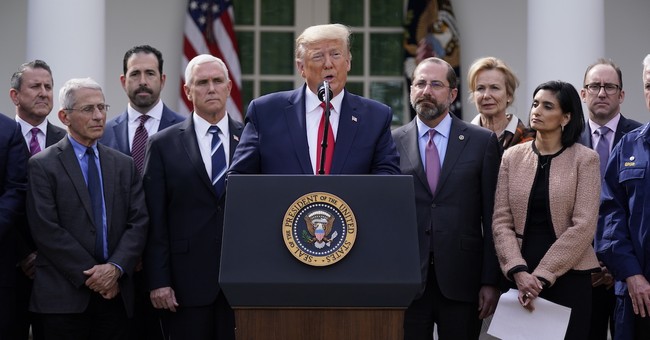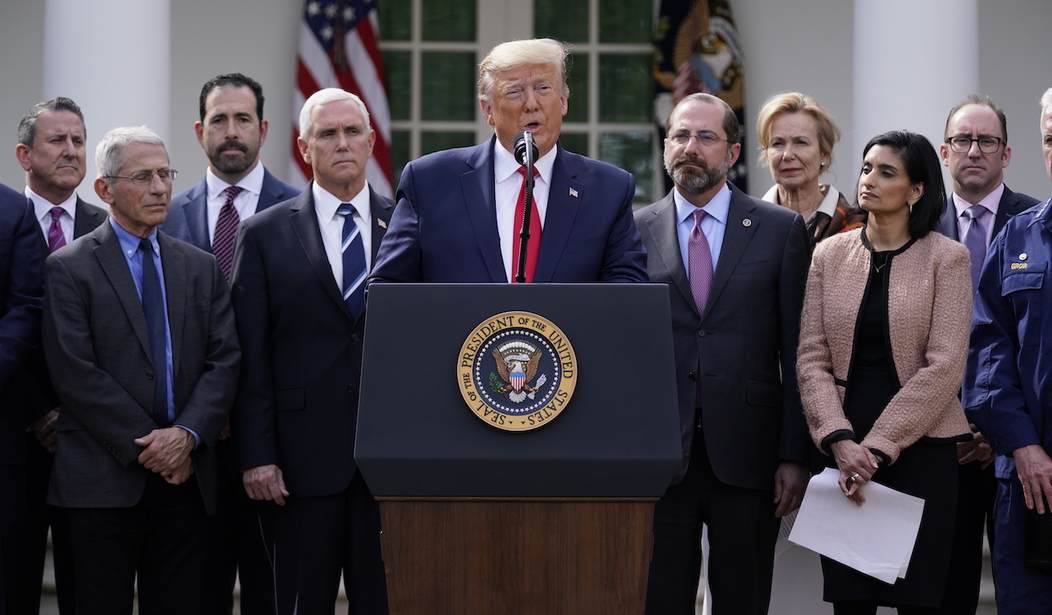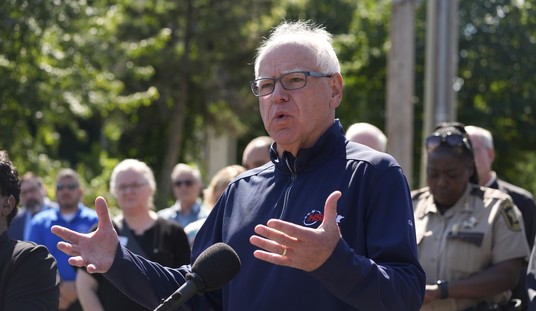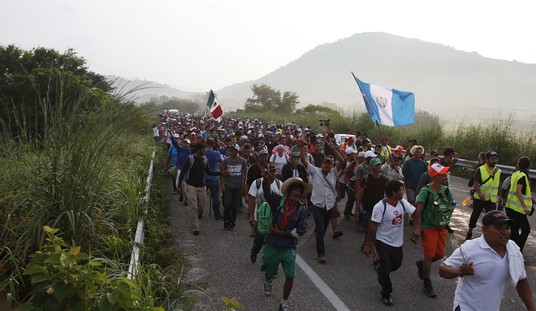
President Donald Trump speaks during a news conference about the coronavirus in the Rose Garden of the White House, Friday, March 13, 2020, in Washington. (AP Photo/Evan Vucci)
There’s an old Army adage, “The Commander is responsible for everything his unit does or fails to do.” That also applies to the President of these United States. The President gets the credit when things go right (except for Donald Trump) and gets the blame (except for Barack Obama) when things go wrong.
Ultimately, President Trump sits at the apex of the Executive Branch and is indeed responsible for any shortcomings, real or imagined of test supplies, equipment and process. It appears he takes that responsibility seriously. However, he was held back by longstanding regulations that prohibited rapid response to this crisis by Local and State authorities, especially when it came to testing procedures.
In a March 10, Article, the New York Times admitted that bureaucratic restrictions likely hindered rapid manufacture and distribution of test materials by local and state authorities. The article starts off from the point of view of Dr Helen Chu, a Seattle infectious disease expert who had serendipitously obtained test samples from another project that would have helped identify folks who had been infected with the Coronavirus. From the article.
Federal and state officials said the flu study could not be repurposed because it did not have explicit permission from research subjects; the labs were also not certified for clinical work. While acknowledging the ethical questions, Dr. Chu and others argued there should be more flexibility in an emergency during which so many lives could be lost. On Monday night, state regulators told them to stop testing altogether.
The article goes on to describe how bureaucracy affected almost the entire government response
The failure to tap into the flu study, detailed here for the first time, was just one in a series of missed chances by the federal government to ensure more widespread testing during the early days of the outbreak, when containment would have been easier. Instead, local officials across the country were left to work in the dark as the crisis grew undetected and exponentially.
Even now, after weeks of mounting frustration toward federal agencies over flawed test kits and burdensome rules, states with growing cases such as New York and California are struggling to test widely for the coronavirus.
Read: It’s Just Everywhere Already’: How Delays in Testing Set Back the U.S. Coronavirus Response
Since the initial reports, U.S production of test kits has ramped up and is set to expand even further. As I mentioned in a previous article, this effort will be less of a medical effort and more of a logistics one. The Center for Disease Control, the CDC, is (most days) the class of the league when analyzing nefarious bio-critters that might harm us. They are not however, a manufacturing and distribution organization. That skill set resides on the private sector.
Read: Opinion: Beating the Corona Virus Will Be More of a Logistical Fight Than a Medical One
The left has almost gleefully pointed out the Republic of (South) Korea (ROK) as the nation that could show the United States how to do it. Our own taxpayer supported leftist megaphone recently touted the ROK system for mass testing. They have a point. Here’s the important metric
A nation of 51 million, South Korea has tested about 250,000 people since its outbreak began on Jan. 20, with a daily capacity of 15,000. It has conducted 3,600 tests per million people compared to five per million in the U.S.
“In order for Korea to carry out all these tests, you have to get all these ducks in a row,” says Feigl-Ding, which is why he concludes: “I think Korea has done a great job.” By contrast, he adds, “the United States has not.”
Further down the in the article comes the real kicker, emphasis mine
South Korea, however, learned many of its lessons the hard way — by not having sufficient resources to cope with previous epidemics, notably the 2015 MERS outbreak. At the time, the Korean Centers for Disease Control, or KCDC, was the only institution authorized to do epidemiological testing.
The problem, says Yonsei University’s Lee Hyukmin, is that “in South Korea, private institutions account for 90% of the medical system, and 90% of our testing capacity,” especially laboratories to analyze samples. “So we needed the support of the private sector.”
Now, he says, public and private sectors cooperate more efficiently, having come together in voluntary collaboration. And the KCDC reorganized to respond more effectively to epidemics, including a branch specifically in charge of testing and diagnosing infectious diseases.
The medical sector has come up with innovations such as the drive-through clinics. The clinics simplify the time-consuming process of protecting medical workers from infection.
Read: South Korea’s Drive-Through Testing For Coronavirus Is Fast — And Free March 13, 20201:52 PM ET
This was the obstacle President Trump had to overcome in order to handle this crisis effectively, bureaucratic inertia, built up over decades. The President spoke of this again today, as he referred to some of the red tape he had cut. The best part of this, is that by touting South Korea as “the model” for Coronavirus response,” two (or more) leftist news outlets have admitted (though they likely don’t know it) the private sector will almost always provide the working solution, not the government.














Join the conversation as a VIP Member